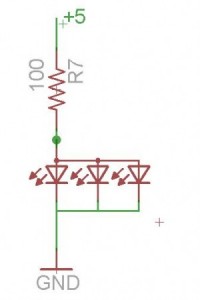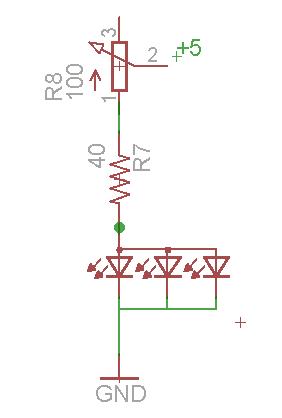Analog lighting control and the LED
Do you have dimmer switches on your incandescent lights?
They used to be basically a resistor that controls the current going to the filament in your bulb. The filament is the little coiled wire inside of the bulb. As current is put into the filament, it is released as heat. When a wire gets really hot, it turns red. This is what you’re seeing when you turn on an incandescent.
As you turn the dimmer switch (think potentiometer), the current going to the filament is reduced and the light gets less hot and dimmer. Or the current is increased as the potentiometer decreases in value and the light gets hotter and brighter.
According to How Stuff Works, the new and improved way is to pulse power to the filament, using the sine wave characteristic of AC power to switch the current on and off. It’s a great article … I love How Stuff Works!
LEDs can’t really be controlled in the same way, unfortunately. The reason for this is that they are not a resistive device. The incandescent bulb uses heat to make light, but an LED that gets too hot will just die.
There is a limit to its brightness.
Here’s a super simple circuit to illustrate what I mean. There are three LEDs there because it is a RGB in one package. That means there is a red, a blue and a green LED all in the same circuit.

This circuit is designed for about 20 mA, which is what the LED specifications say. If you run more than 20 mA through the LED continuously, the LED will get hot and die.
So I’m going to cheat a little bit, run more than 20 mA through the LED but limit it with this circuit. I’ll use the potentiometer to turn the amount of current up or down. The big problem with this circuit is that you can’t turn the LED OFF. Even if you did turn it off by making the resistance very very high, a potentiometer in the Mohm range is big and expensive.

The solution is to pulse the current to the LED. While the current is on, the LED is on, and while it is off, the LED is off. While the LED is off it has a chance to cool down. However, the human eye keeps the image of the on LED for about a 25th of a second, which tricks the brain into thinking it is always on if the LED is pulsed at that rate or higher.